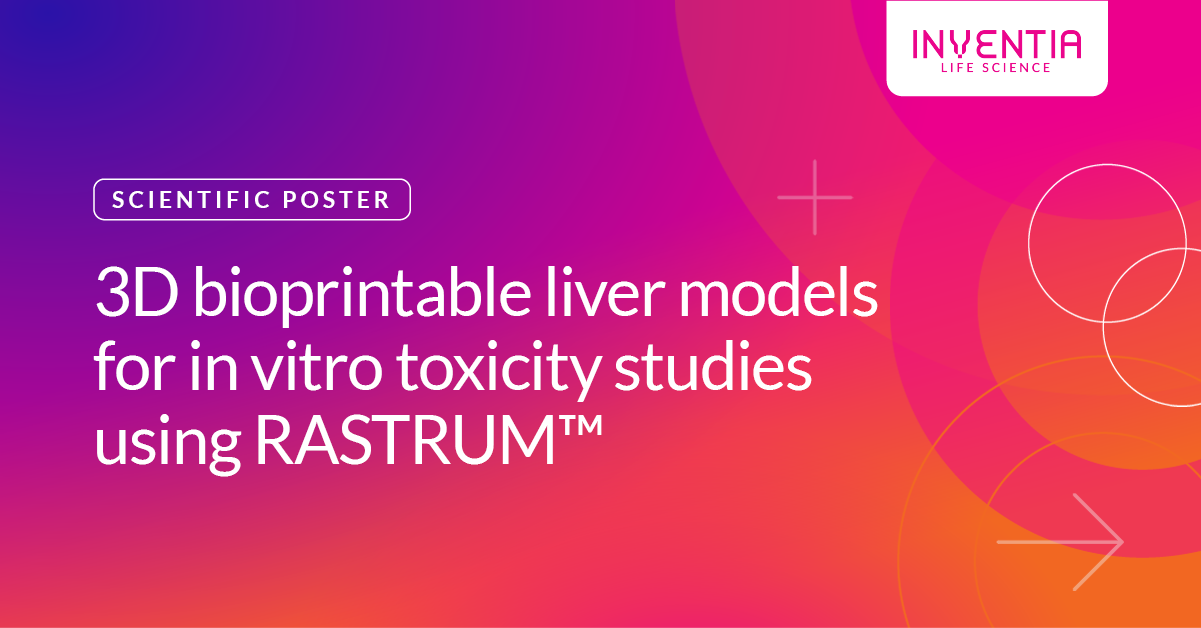
3D bioprintable liver models for in vitro toxicity studies using RASTRUM™
Presented by Inventia Life Science, the Ingham Institute, and UNSW Sydney at Gastroenterological Society of Australia AGW 2020.
Background
Effective liver toxicity models are critical for preclinical drug development, yet many existing systems lack reproducibility and physiological relevance. This study demonstrates the use of the RASTRUM™ 3D bioprinter and PEG-based synthetic matrices to create robust 3D liver models using hepatocyte, stellate, and hepatocellular carcinoma cell lines. Printed directly into 96-well plates, these models support sustained viability, recapitulate in vivo-like responses, and are fully compatible with standard in vitro workflows—including drug treatment assays and downstream RNA/protein extraction. The findings highlight increased resistance to thioacetamide-induced toxicity in 3D cultures compared to 2D, underscoring the biological relevance of bioprinted liver models.